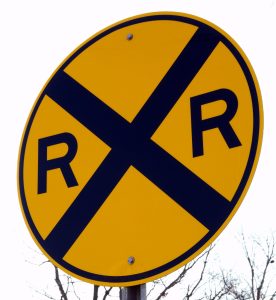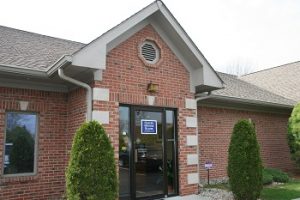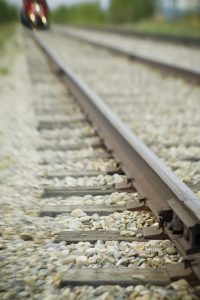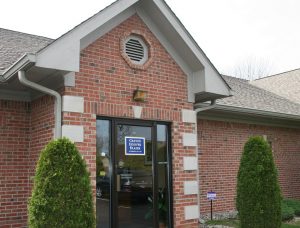
Advance Warning Sign for Railways
Railroad safety is not only important at public and private crossings, it is also critical to use proper precaution around train tracks. Continue reading to learn more about highway-rail grade crossings, as well as critical safety tips that will keep you protected from serious accidents and injuries. Be sure to share these tips with your loved ones!
The Most Common Railway Warning Signs
There are several types of devices, signs, and signals the U.S. DOT uses to keep drivers and pedestrians safe around train tracks and crossings. The five most common include bright yellow advanced warning signs, crossbuck signs, crossbuck signs with signals, gates with flashing red lights, and pavement markings. As a driver, it is highly likely you have seen these signs before.
Advanced Warning Signs – These signs are yellow and have the double “R’s” and a big black “x” on them. They are generally the first sign that appears when you are approaching a highway-rail grade crossing. You must slow down and pay close attention so that you are prepared to stop.
Crossbuck Signs – These are the white signs in the shape of a big “X”, with the words “Railroad” on one side and “Crossing” on the other. For crossings with multiple tracks, they are generally accompanied with a smaller sign below indicating the number of tracks to anticipate. When you see this sign, you must yield if a train is on the way, on all tracks.
Crossbuck Signs With Signals – These signs look just like crossbuck signs, but are also accompanied with mechanical signals and lights to indicate an approaching train. When these signs are flashing, you must come to a stop and wait for the train to pass.
Gates With Flashing Red Lights – You often see these red and white mechanical gates that raise and lower for crossing traffic. If you approach railways gates that are lowering and flashing, you must stop and wait for the train to pass. Afterwards, you cannot proceed until the gates have finished lifting.
Pavement Markings – Pavement markings like “RXR’s” and “stop lines” are common to see when you are approaching a railway crossing. You must stay behind the stop line and pause to look for an oncoming train. If the tracks are clear, you can proceed. If there is not a stop line present, you must stop at least 15 feet from the closest rail.
Critical Railroad Safety Tips
⛒ Always look both ways before crossing a railroad track, whether on foot, on a bike, or in a car.
⛒ When crossing a track in a manual transmission vehicle, do not change gears mid-track.
⛒ If you must cross a track on foot, you must be sure there is enough clearance on the other side before crossing. In many cases, trains overlap tracks by 3 or 4 feet, and sometimes more.
⛒ Never park or linger on train tracks. If an engineer sees you, they cannot stop in time at 55 miles an hour. It would take at least a mile for the train to come to a complete stop.
⛒ If your car stops on tracks, immediately exit your vehicle and wait at least 15 feet from the train tracks for roadside assistance or the police. You may also call the emergency notification number posted near the crossing. Do not call a non-professional (friend, family, etc.) for help; this is not safe.
⛒ If you see a train approaching, do not try to outrun it with your car or bike. Although trains look like they are faraway, they are much closer and faster than they appear.
⛒ If you are seriously hurt as a result of someone else’s train track negligence, contact an Indianapolis personal injury lawyer to recover compensation for your losses and damages.
Indianapolis Personal Injury Attorneys You Can Trust

Personal Injury Law Firm
317-881-2700


